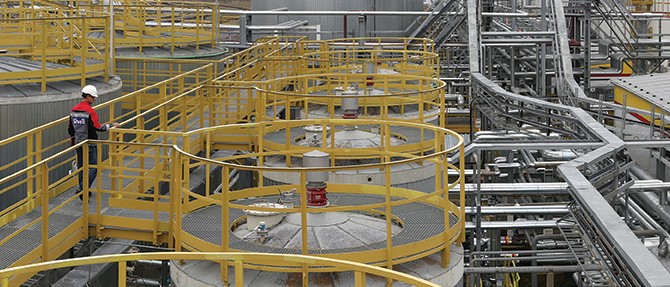
Royal Dutch Shell expects that annual earnings after tax for its global commercial business – most of which is accounted for by lubricants – will grow from $1.4 billion in 2017 to close to $2.5 billion in 2025, driven by factors such as growth in sales of premium lubricants and expanded market shares in several large, developing markets.
All of Shells lubricants business is under its global commercial business, along with its aviation business, bitumen and other specialty products.
About $400 million of that growth is expected by 2020, the Netherlands-based company recently stated in its downstream growth outlook update to investors.
Shell identified several factors that it expects will be key to the growth it helps to achieve. It expects the proportion of its products that are premium lubricants – which generally carry higher profit margins – to rise from 40 percent to 70 percent by 2025. It aims to expand its market shares in five big, developing markets that it has pegged as priorities: China, India, Indonesia, Mexico and Russia. The company has opened large blending plants in recent years in three of those countries – China, Indonesia and Russia.
Shell is also aiming to increase sales of industrial lubricants and to introduce new digital businesses and services.
The company has moved forward with lubricant business expansion plans and building new blending plants in several countries in recent years.
Last month, Shell Co. of Thailand said it plans to increase its number of automotive oil change outlets and significantly raise lubricant sales by 2025 as the local lubricant market continues to grow.
In late 2017, Shell opened a 390,000 tons per year blending plant in Singapore to strengthen its supply chain and to expand in the marine market in Asia-Pacific.
In 2012 the company opened a plant in Torzhok, Russia, with capacity to produce 180,000 metric tons per year. Recently it said that plant had reached nearly 60 percent of capacity and that the company in 2017. Shell said it still sees plenty of opportunity for growth in the region and aims to continue ramping up output over the next decade.
The companys subsidiary in Russia, Shell Neft, recorded 106 million tons of finished lube sales in Russia and neighboring countries in 2017, according to a Feb. 8 news release. The company added that it aims to have sales reach 180,000 t/y by 2027.
Shell Lubricants has been the leading global lubricant producer for 11 years in a row, according to Kline & Co. consultancy. In 2016 it supplied 11 percent of the total global lubricant production, or about 4.5 million tons, the consultancy estimated.
It is a leading lubricant supplier in the United States, Great Britain and Malaysia, while it is among the top three lube suppliers in 13 additional countries such as Argentina, Canada, China, Germany, Austria, Switzerland or Saudi Arabia, according to Kline.
Worldwide, the company operates 44 lubricant blending facilities, 7 base oil plants and 15 grease production sites.
Photo courtesy of Shell
